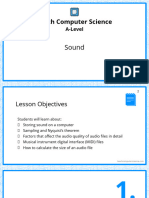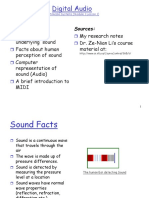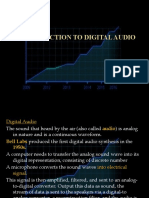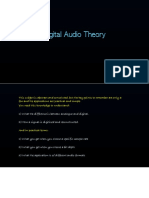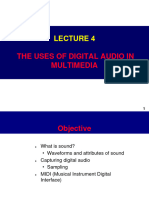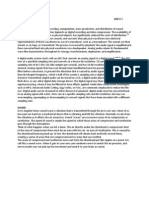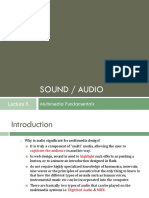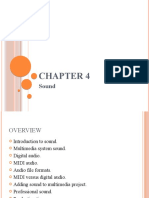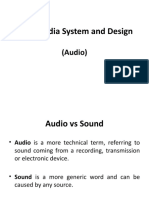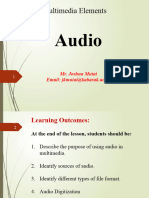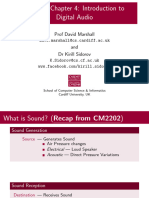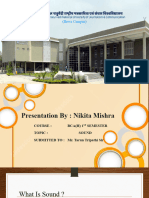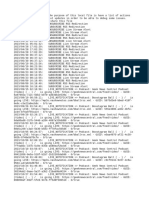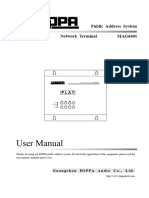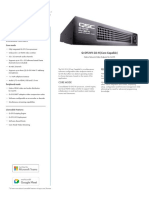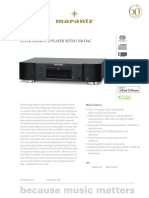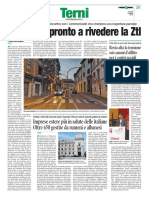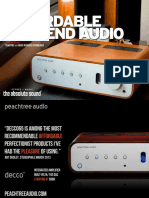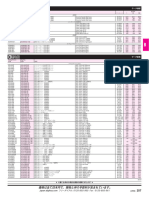0% found this document useful (0 votes)
6 views44 pagesChapter 5 - Audio Digitalization Sampling
The document discusses the digitization of audio and video, detailing the processes of sampling, quantization, and encoding for converting analog signals into digital formats. It explains key concepts such as sample rate, sample size, and the differences between MIDI and digital audio. Additionally, it covers video digitization, file size considerations, and various file formats used for audio and video storage.
Uploaded by
Resika UmayanthaCopyright
© © All Rights Reserved
We take content rights seriously. If you suspect this is your content, claim it here.
Available Formats
Download as PDF, TXT or read online on Scribd
0% found this document useful (0 votes)
6 views44 pagesChapter 5 - Audio Digitalization Sampling
The document discusses the digitization of audio and video, detailing the processes of sampling, quantization, and encoding for converting analog signals into digital formats. It explains key concepts such as sample rate, sample size, and the differences between MIDI and digital audio. Additionally, it covers video digitization, file size considerations, and various file formats used for audio and video storage.
Uploaded by
Resika UmayanthaCopyright
© © All Rights Reserved
We take content rights seriously. If you suspect this is your content, claim it here.
Available Formats
Download as PDF, TXT or read online on Scribd
/ 44


